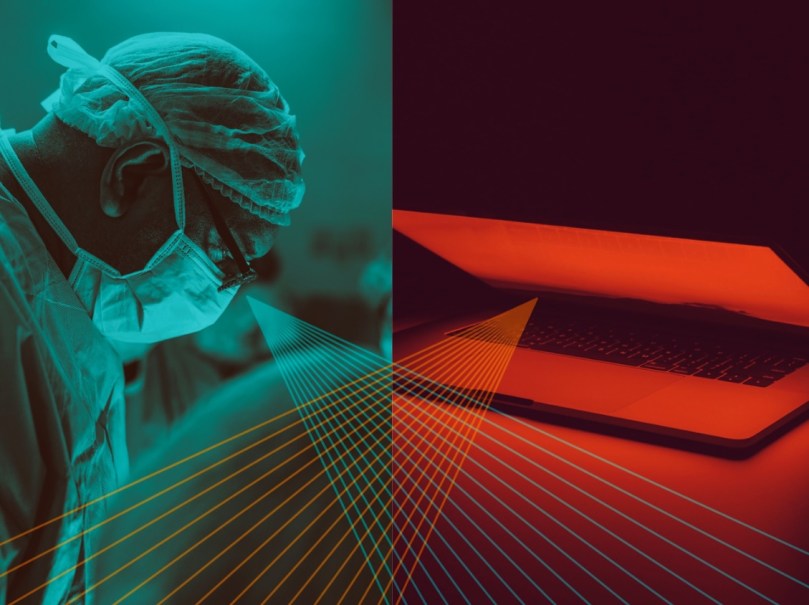
The phrase “digital health” has many connotations. It is mobile apps, EDM, clinical IT systems, or telemedicine. It represents management tools for hospitals or the med-tech gadgets for innovation’s early adopters. Usually perceived in the context of technology, digitalization has become a hermetic science for engineers, but also an obscure notion for doctors and patients. How can we make digital health a catchy philosophy of transformation for society?
Developing an experience
“Most people consider technology a product business. But technology is fundamentally a people business,” writes Brad Smith, President of Microsoft. In the book “Tools and Weapons: The Promise and the Peril of the Digital Age” he takes the readers behind the scenes of big-tech and shows the impact of leading software and technology developers on democracy, civil rights, equality, education and our lives. How is it then in healthcare? Are health-IT companies changing our health, well-being and quality of life or just producing information and management systems?
“It’s odd how when we think of digital health, we often tend to think about the most complex first – AI, smartdust, blockchain, etc. – and miss out on opportunities to simplify the more mundane stuff, the moments that matter,” says Rasu Shrestha, Chief Strategy Officer and Executive Vice President at Atrium Health. “The opportunity is for us to focus on upping the experiences for the patients, consumers, and our clinicians. Bring back the smiles, create those moments, make those connections meaningful. That’s the power of digital health, done right,” he adds.
Large corporations like Google, Apple, and Microsoft have long understood that new features or quality of the software are no longer elements that constitute goodwill. Windows and iOS have become similar to each other. Computers from different manufacturers have almost identical components. Sometimes these are the same machines sold under various brands. Modern smartphones all look the same. They differ in some details, which for the consumers have almost no significance.
The decisive factors lie today in the values associated with the company, identification with the culture represented by the brand, the feeling of belonging to a specific group of users as a form of a social label. All these you can experience watching Apple conferences. The presentation of iOS upgrade is a form of a great show, a combination of Eurovision Song Contest, an action movie, and the broadcast of an event of moon-landing proportions. But without unnecessary kitsch.
It is emotions that generate a sense of changing the world for the better. Enthusiasm and authentic innovation create an atmosphere where even small modifications seem to be an entirely new way of experiencing technology. A new fall detection or ECG-monitor feature? It’s far more: we are creating the history of medicine. And this is the most powerful impact of technology: convincing societies to be a part of a substantial change.
Service is a new quality
Apple knows that it is not a smartphone or computer manufacturer like it was in the ’80s and ’90s. Although the company’s products are statistically more expensive than those of its competitors with comparable features, users decide to choose the Apple logo because they want to be a part of a particular community. A similar strategy is followed, for example, by Starbucks, which offers a sense of belonging to a desired lifestyle, where a green logo on a mug symbolizes higher social status. And for some, that is worth the higher price.
Today, digital health fetishizes electronic medical records and focuses on interoperability and data protection.
In a world filled with products and informational noise, emotions rule. These are noticeably missing when we look at the digitization of healthcare. We keep hearing that IT systems for physicians should be simple, functional, and intuitive. I would call it “a fetishization” of their practical dimension, where the main objective is electronic medical records with priorities such as standardization, interoperability, and data protection. Such a philosophy of the design and development of IT systems, from a functional and qualitative point of view, seems to be well overdue today. However, much remains to be done on such fundamental issues as the exchange of electronic medical records. But we should be aware that digitalization won’t have an endpoint: when we are done with interoperability, new challenges like, for example, data cleanness for AI analyses will come up.
A physician who logs into a software application should not consider it most important that he or she enters the diagnosis and prescription drugs into the medical records. A much more significant should be the feeling that the data comprise an element of patient care, that this simple information is an essential component of the therapy, forming one of the building blocks of a continuous care process, and saving lives. Of course, such a shared vision must be authentic to become convincing enough.
Enjoy your patient journey
IT system providers begin slowly to understand that healthcare is not about the isolated health and care services, but an extended journey for each patient. It is a journey from doctor to doctor, a series of everyday conscious and unconscious decisions and choices that affect health. They are different for sick or healthy people, for teenagers or the elderly. They vary depending on social status and place of residence. But there is a common point in this diversity of needs: every citizen should have the possibility to experience healthcare in a way tailored to individual expectations, environment and priorities, with no templates for all. And digitalization can make it real.
Already today, the patient journey can be simplified by physician-patient communication tools, telecare platforms, patient portals, and mobile health applications. But these are not just tools. It is a new model of healthcare that engages the citizens, preventing them from disease or leading step by step through all stages of diagnosis, treatment, and rehabilitation. Its infrastructure is built on IT systems where the software becomes an unnoticeable backdrop in access to new services. Just as when typing on a well-designed, smoothly running computer, instead of the keyboard itself, we focus on what we want to write.
A copy or an original?
Startups know it already. Many of them enter the market with an almost identical idea or solution, but only some of them succeed. The authenticity of the motivation to use innovation to help a specific group of patients is verified by time and consumers. A well-prepared presentation, energetically delivered at an event for investors and potential customers, is not enough.
Unfortunately, the attractiveness of startups must be sometimes built up by the atmosphere created during such events, organized in attractive places, preferably in a loose setting, accompanied by a DJ and free drinks. If you compare some of the pitches by startups with the presentations held by Apple, there is a considerable gap. Credibility simply cannot be generated by special effects and fireworks. It is deeply rooted in the values represented by the company. Or more precisely – in the team of people who make up the company. In their work, passion, and sincere commitment. It’s a people business.
The ability to convince requires authenticity. And authenticity is a sum of depth-in knowledge and experience. Have you ever taken part in a keynote when you had an impression of incoherency between the person and the presentation? When the speech was impressive, like the popular TED talks, but somehow far from reality to inspire you to act? And vice versa – when someone with a background and simple slides gave you bread for thoughts? That’s the power of storytelling instead of fiction-telling. Sometimes we just intuitively feel under the skin what’s real and what’s fake.
Malcolm Gladwell describes well this phenomenon in the book “Blink.” He claims that there are moments when we know something without knowing why. The first impression can convince you without the need to prove you are right by doing detailed research.
The user interface of values
The company created by Steve Jobs is a benchmark on how to develop innovative solutions for people. Compared to the first versions of Windows, iOS was an intuitive work environment from the beginning. The user had control of the interface, not the other way around. The first iPhone with a touchscreen was so simple; you would think it was a perfect fit for the human hand. This perfection has always been uncompromising.
Even though today most health care software development companies already employ UX/UI (user experience/user interface) experts, a comfortable interaction between a physician or a patient and the IT system is an element of a broader context. Communication as a form of sensation, not use. Just like trust, instead of data safety. Every value of this kind earns our respect, so the importance of technology suddenly goes beyond the sum of single functions. Remember that health is a two-sided concept. It’s both rational, objective, measurable and personal, subjective and intangible. Digitalization can support experience in both layers.
Human workflow
John Nosta, an innovation theorist and health technology expert, describes it as assimilation of health into daily lives: “Ironically, the driver for digital health adoption lives on two rather divergent poles on the adoption continuum. The first is in the world of science and medicine. Health technology must provide a level of clinical validation that supports its clinical use either as a direct tool or measurement or as a determinant of an outcome. Here’s it’s all about science. However, the other side of this duality is the necessity for health tech to be assimilated into our lives in a seamless and unencumbered way. From clinical practice to the dining room table, the advances that technology offers society requires that they are integrated into our “human workflow” to provide experiential advances and improvements.”
Digitalization is becoming a necessary foundation for new healthcare – democratic and empathic one. Some of us believe in equal access to health services, health for all. For others, the goal is to improve the quality of care or to lower the burden of non-communicable diseases through precise prevention. Data engineers believe in progress in medical science due to data analysis. Regardless of priorities, a clear vision of modern healthcare accelerated by digitalization can unite all stakeholders and give the patients an explanation of what digital health is actually about. Maybe then we will start perceiving processors as influential change-makers instead of integrated circuits built of transistors.

I have a small favour to ask…
This content is free of charge. This website is free of commercials. Please support aboutDigitalHealth.com (€1+). It only takes a minute. Thank you!
€1.00